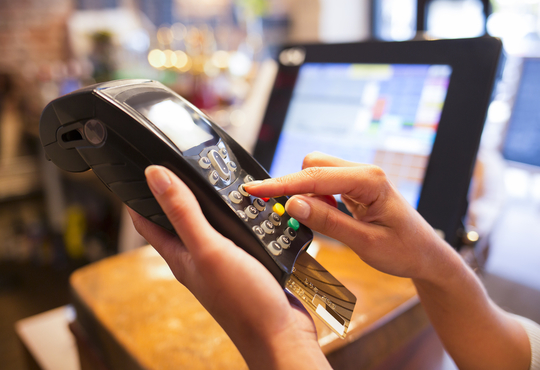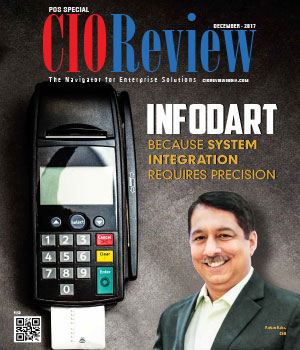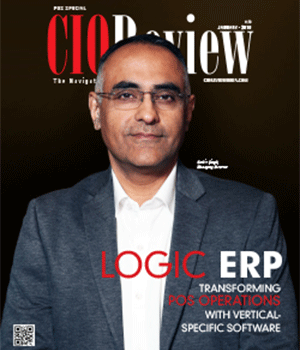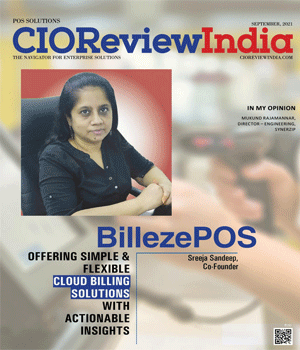
Point of Sale is Now Point of Sense
Bala Thiagarajan, Head - IT, Hudsons Bay Company
 Retailers who continue treating POS as just ‘Point of Sales’ are passe. The new wave is for the POS to be considered as the ‘Point Of Sense’. Being the first visible point of customer interaction, it is here that a retailer makes or breaks his/her reputation. How many of us like to wait at the checkout counters? How many of us like to see more than 2 people in front us in a checkout lane?
Retailers who continue treating POS as just ‘Point of Sales’ are passe. The new wave is for the POS to be considered as the ‘Point Of Sense’. Being the first visible point of customer interaction, it is here that a retailer makes or breaks his/her reputation. How many of us like to wait at the checkout counters? How many of us like to see more than 2 people in front us in a checkout lane?
The above questions have been plaguing retailers and some like Tesco have taken the initiative to drive programs like ‘I do not queue’. I would even go to the extent of stating that this was among the first program to use a version of Internet of Things (IOT). A sensor tracks the number of people in the queue and on identifying more than a predetermined number, automatically opens an extra checkout. The proliferation of mobile POS and self-checkouts is another outcome of the search for a solution to the queueing problem. We have now entered the era of the smart POS.
Retailers do not hesitate to spend on POS upgrades, how can they get more bang for the buck? They should start by questioning if they are getting all possible information from the POS with due respect to the privacy of the individual. What kind of information is available from the POS? At the outset, we have ready access to the purchase pattern of an individual and with the ubiquitous presence of loyalty programs, this information can be used for targeted marketing. This is something that most of the retailers are already doing. What then is the next frontier?
The biggest problem facing retailers is Out of Stock. The average OOS across of the global retail players hovers around 8 percent https://www.nacds.org/(which means that for every 100 orders, only 92 orders are serviced in full). Again, globally, retailers lose 4 percent of sales due to OOS. Can the information at the POS be used to reduce the instance of OOS?
Walmart and P&G have proven that having a smart shelf connected to the supplier warehouse and having a dynamic replenishment program reduces the incidence of OOS. It is a verified fact that Walmart reduced the OOS on Gillette blades (from P&G) to almost nil using a linked shelf. Having said this, not every retailer is a Walmart and not every CPG is a Procter and Gamble. So how can the non-Walmart’s and the non-P&G’s collect and utilize the consumption data?
With the proliferation of smart devices including smartphones and tablets in the store, is there an opportunity to link the consumption information at the POS to the stock at hand? Thinking in the same vein, I do see an opportunity of mocking the smart shelves using the information available at the POS. If we can enable a small application at the POS (it could be at the POS database and it could take the form of a BOT) which would track the sale at the item level and compare it with the stock level at the shelf (a temporary table could be updated at the start of the store day and after every replenishment to keep the item quantity updated). As soon as the remaining stock falls below a pre-determined stock (which is determined for each item based on the historical consumption of the same), a message can be triggered for shelf replenishment from the back store. The message can be linked to the smart device at the hand of the store manager and enable quick and efficient shelf replenishment.
The same solution can be extended to the back store and can trigger replenishment of the back store from the warehouse. The stock at the back store can also be stored at the item level in the temporary table and based on a safety stock information for the back store (again determined based on historical replenishment trends and the time taken to replenish). The frequency of such replenishment requests can determine the replenishment schedules. If the warehouses can be run by the vendors, then this is the truest version of vendor managed inventory (VMI) as the consumption pattern as evidenced at the Point of Sales (POS) directly drives the replenishment of the warehouse.
CIO Viewpoint
Why Foolproof Facial Recognition Is Key Against...
By Joseph Sudheer Thumma, Global CEO & MD, Magellanic Cloud
National Technology Day 2025: Powering Progress...
By CIOTech Outlook Team
Aligning IT Roadmap with Business Objectives: A...
By Subhash singh Punjabi, CISO & Head Enterprise Architecture, Deepak Fertilisers & Petrochemicals Corporation Ltd
CXO Insights
Why Merchants are Making Payment Data Security...
By Sunil Khosla, President- Digital Business, India Transact Services Limited
DIGITAL TRANSFORMATION - What Successful...
By Vineet Aggarwal, Head IT, SRL Ltd.
Evolution Of Point Of Sale Systems








